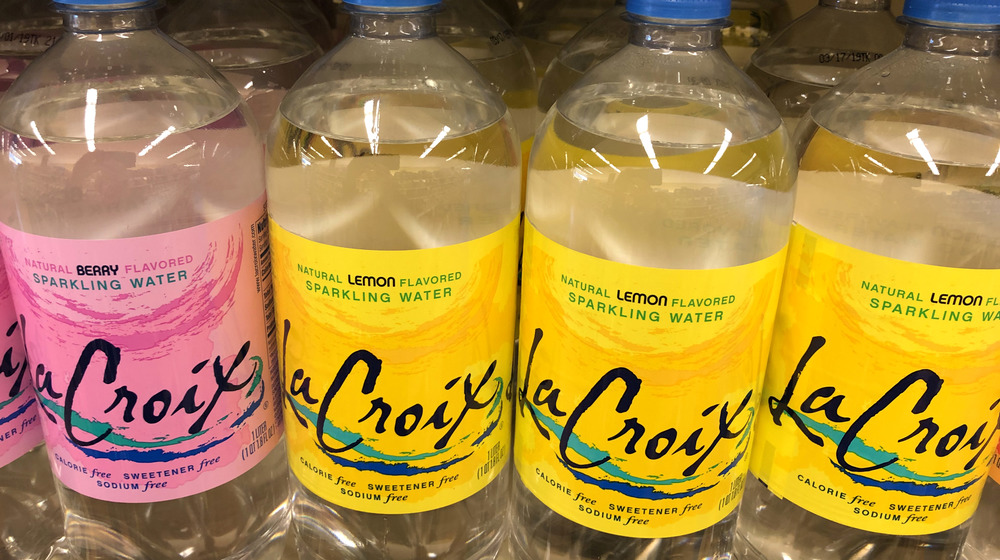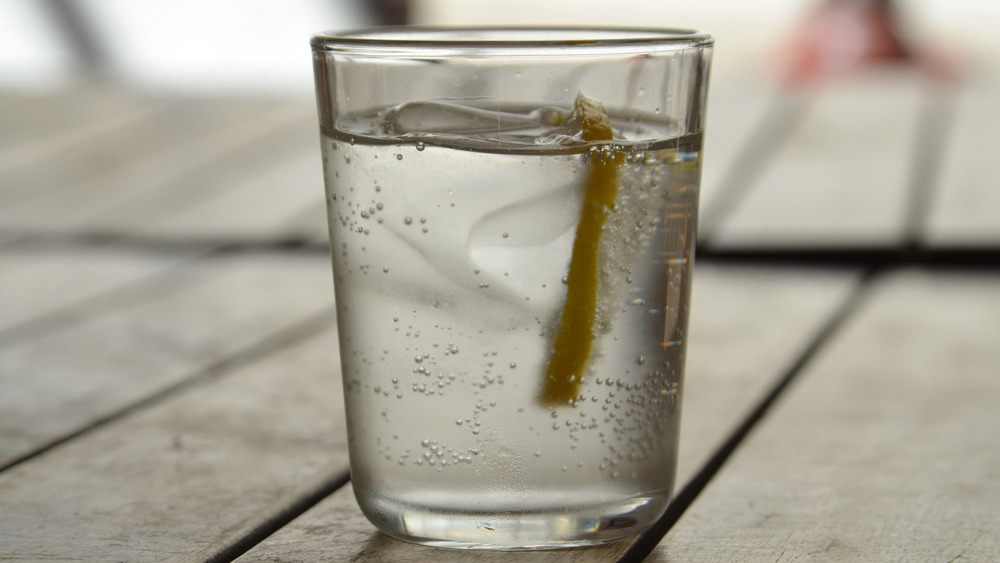The Real Difference Between Sparkling Water And Seltzer
Over the last year, it seems like everyone has been trading their plain old bottled water for colorful cans of La Croix. Flavored sparkling water has taken the beverage world by storm, with the category expected to grow nearly 12 percent over the next few years (via Grand View Research). It's easy to understand the obsession — you get the fruity flavors and bubbly carbonation of soda without the added calories and sugar (or artificial sweetener). In other words, it's a much healthier (and arguably much tastier) alternative to your Diet Coke addiction.
But take a trip down the water aisle of the grocery store and you'll be overwhelmed with options. Not only are there a ton of flavors to choose from — passionfruit, key lime, watermelon, and even limoncello — but there are also different types of carbonated water. You'll see some that say sparkling and some that say seltzer. Wait a second. You thought they were the same thing! Turns out they aren't. Here's the difference between the two.
The bubbles aren't the same
The one thing that makes sparkling water different from seltzer water is in the carbonation. More specifically, where the carbonation comes from. People explains that if the carbonation is naturally occurring, it's sparkling water (think La Croix or San Pellegrino). This water, Sodastream says, comes from a natural mineral spring or well and the bubbles are often smaller and finer. Because it comes from a spring, it also tends to have naturally-added minerals like calcium or magnesium.
On the other hand, if the bubbles are artificially created, it's seltzer water. Seltzer is made with plain water and the carbonation is added later on in the process through the addition of carbon dioxide. Healthline notes that because there are no added minerals in seltzer water, it often has much more of a "water" flavor than sparkling water, which can taste slightly heavier (and which makes seltzer more ideal for cocktails).

